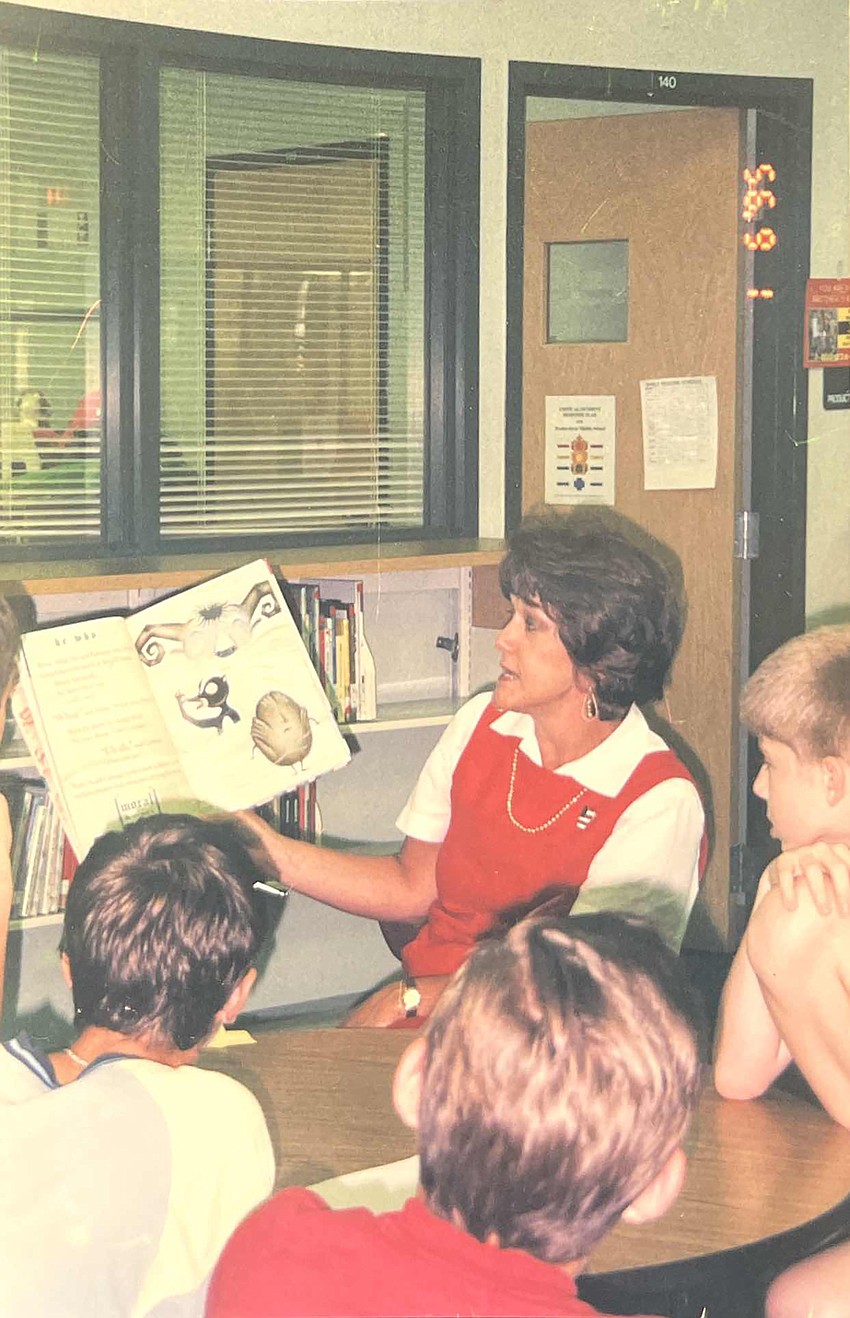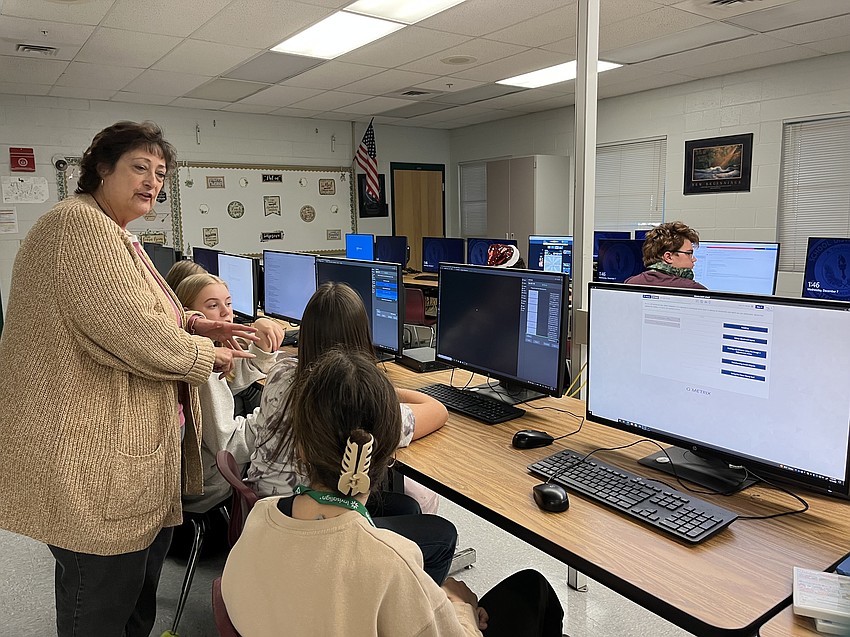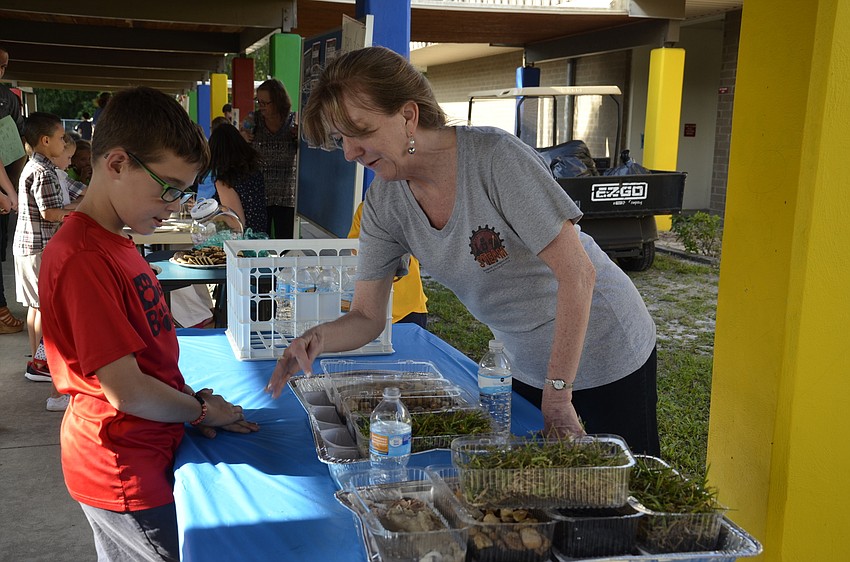- April 11, 2025
-
-
Loading

Loading

They started in the days of overhead projectors and encyclopedias.
Victoria Short and Margaret Gaitens, second grade teachers at William H. Bashaw Elementary School, are now teaching at a time when nearly all their students have their own computers, teachers have Promethean boards, and Google has almost all the answers.
Education has constantly changed throughout the years, and longtime teachers have had to make adjustments to keep up.
“It’s the only job that you could do all the time for all these years, and it never gets easier,” said Short, who has been teaching for 33 years. “They say you can’t teach an old dog new tricks. Well, you can, and these dogs have to learn the new tricks or we’ll get sent to the pound.”
Gaitens, who has taught for 34 years, agreed.
“You’re learning new curriculums, new standards and expectations,” Gaitens said.
Over the past 30 years, Short and Gaitens, along with Bobbi Colson, a Lakewood Ranch High School web design and computer animation teacher, and Katy Kimbrell, Braden River Middle School’s Exceptional Student Education department chair, have seen changes in technology, classroom strategies, safety and security, and more.
Gaitens said expectations and rigor for students and teachers have risen since she first started. For example, her second graders are expected to read passages that are several pages long compared to 30 years ago when her students were reading two or three sentences per page.
They’re vocabulary is far advanced from their early years in teaching. For example, she said “obscure” was a word in her lesson in December.
“That would never have happened when we first started teaching,” Gaitens said.
Gaitens said by second grade, her students are already learning how to write expository, opinion and narrative essays, which used to be taught in high school.
When she started working at Southeast High School in 1995, she was teaching keyboarding and Microsoft Office. They were skills students learned in high school before going to college or into the workforce. Her students now have learned Microsoft Office and keyboarding at an earlier age, and her classes have become more focused on topics like web design and computer animation.
“The diversification of jobs, careers and pathways is phenomenal now,” Colson said. “We’re a small cog trying to help show them what all is out there and available for them. Not everybody’s going to be college bound, but because of the advent of technology and software, you don’t have to be to get a rewarding, satisfying, well-paid job.”
Colson said there’s been more of a focus on career and technical education with teachers of those classes having their “feet held to the fire” to validate the worth of their programs. Students are working toward industry certifications as early as middle school.
“What a leg up for kids," she said. "This is their first baby steps into the business arena. Fifteen-20 years ago, you showed (employers) your high school diploma, you showed them your college diploma. Employers would go, ‘OK, so what else do you know?’ They’d hear crickets. We’re giving (students) a provable set of skills.”
When the expectations of students were lower, Gaitens said teachers had more creative freedom in the classroom with their lessons. Now teachers have to keep their lessons moving to follow structured guidelines.
Kimbrell is finding more students are needing extra support in the classroom, and more students are having behavioral issues.

She said schools work with the community to find mentors for students, and the district has contracts with psychologists and social workers to help address any issues students might be having.
When Kimbrell was starting her career in 1983, ESE students were more isolated and weren’t in class as much with general education teachers.
Kimbrell worked with administrators to have ESE students more incorporated into the general education classrooms. She would work with the student, parents and general ed teacher to build a plan and support system for the student.
Kimbrell, Gaitens and Short said with all the responsibilities and requirements of teachers, they’re working well past school hours, and they’re working harder than ever before.
Kimbrell loves developing relationships with students to be able to better support them, but she’s juggling so many students and trying to keep up with all of her work that she might not get to spend as much time as she would like with each student.
“There’s just not that time in the school day anymore,” she said. “What has changed so much is it just seems like you could finish up your day and have a clean desk and then go home and come back the next morning. It’s really not that way anymore.”
Kimbrell, Colson, Short and Gaitens went from seeing one computer in the classroom at the beginning of their careers. If teachers wanted their students to use a computer, they went to computer labs. Now, nearly every student has a computer.
“The amount of knowledge these kids have access to is phenomenal,” Colson said. “It’s truly mind blowing. They’re doing it all with their phones.”

Teachers have access to countless resources online to enhance their lessons and engage their students.
For example, Short and Gaitens use a program called Epic that allows students to type in any topic they want to learn about, and the program will provide a list of books on that topic.
In Colson’s classes, if she and her students are stumped on finding a solution to a problem, they can always go to YouTube to learn.
“There’s a video for everything on how to do things,” Colson said. “Technology has been the big game changer in education.”
Colson said they’re using technology, like 3D printers, and software that wasn’t always readily and easily available to students.
“We’re finding all the ways to do something with software that the books don’t tell you,” she said.
Kimbrell said technology has made it easier for teachers to be able to keep track of the progress students are making throughout the year. Standardized testing has changed over the years, and teachers are now getting the results of those tests faster than ever before.
Teachers are more easily able to share test results and work with parents on how to help each student progress.

Manatee County is no exception to the national teacher shortage.
Gaitens and Short have always worked at Bashaw Elementary School. In the early years of their careers, they said teachers would want to teach at the school and stay for at least 15 years. In the past few years, they said they’re seeing more teachers leave after only a few years on the job.
“If a spot opened up (at Bashaw), it was gobbled up,” Gaitens said. “Now, it’s very difficult to find people that are going into this profession. I think a lot of it has to do with the workload, plus the salary.”
Colson said teachers aren’t getting the respect they deserve, and the work never stops even during summer vacation.
“New teachers nowadays, if you can get them past that five-year mark, you’ve got them,” she said. “But getting them to that five-year mark is getting harder. Give us the respect, give us the resources we need and let us do what we’ve been trained to do.”
Short and Gaitens said when they started their careers, schools weren’t surrounded by fences with gates. People could come on campus without a problem.
“It’s for protection and to keep people out, but unfortunately it makes it difficult for people to be in an inviting environment,” Gaitens said.
An added safety precaution is the School District of Manatee County’s Guardians program, which was started in 2018. The program has an armed security officer, called a guardian, at each of the district’s elementary schools.
Schools are required to do lockdown drills on top of fire drills and other safety drills.
Colson said schools are no more dangerous than they were 20 years ago, but rather people have a greater awareness of potential threats to schools.
“Do I think the number of guns and stuff like that is more than 20 or 30 years ago, no,” she said. “I think the recognition they’re in school catches us all by surprise. We’re becoming much more aware and conscious of the things that have always been there.”